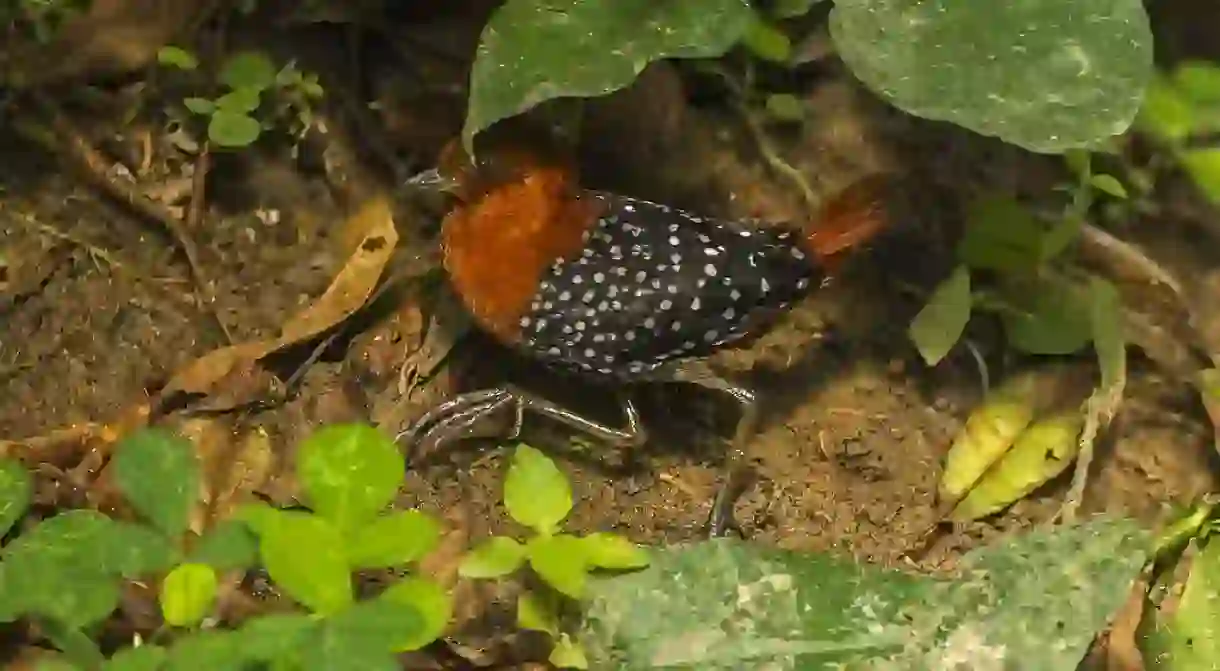Awe-Inspiring Things to Do in Ghana's Kakum National Park

Kakum National Park is one of the most popular tourist attractions in Africa, with breathtaking sights and sounds across its vast rainforest space in Central Region, Ghana. Known for its striking setting and fascinating wildlife, it offers all manner of things to see and do – here’s our pick of the best.
Explore a tropical paradise
The Kakum site attracts over 200,000 visitors annually. The park is part of a large community where ethnic settlements such as the Fante, Assin and Akan live. A Ghana travel guide or bird guide may come in handy, as well as a local phrase book, camping gear and hiking shoes if you’re planning to camp or hike in the park.
Local tip: Be aware that there are no medical facilities within the park, so be sure to carry any the medication you may require, as well as sunscreen, plenty of bottled water, and insect repellent.
Go bird watching
There are more than 400 bird species on the Kakum checklist. The lower-storey and ground-dwelling types bring in tourists who ply the field trail and use the canopy walkway. Common species here are the white-throated bee-eater, the yellow-billed kite, the African hobby, the lesser black-winged lapwing, the long-tailed cormorant, the plain-backed pipit, the African pygmy goose, and the long-tailed nightjar.
Local tip: Be sure to carry along binoculars or telescopes. Platforms fastened to the trees at intervals can hold up to 10 visitors at a time, allowing for good viewing on the canopy walkway.
Enjoy hiking and backpacking
All the way from Pedu junction to Kakum, the 30 km (18.7 mile) Cape Coast route leads into the rainforest where medicinal trees are just one of the many varieties that bring the park to life. For nature lovers, hiking and backpacking are must-do activities here.There are many rare and endangered species at Kakum National Park, including forest elephants, leopards, bonobos, large forest antelopes, monkeys, buffaloes, duikers, and red river hogs, among others – not to mention some 500 species of butterflies adding a touch of colour to the experience.
Local tip: Kakum’s hiking fee is about USD$15 – it’s not much, considering the fact that you’ll be raving about the experience long after you’ve hung up your boots.

Brave the canopy walkway
Such an unimaginably biodiverse rainforest is the perfect setting for a canopy walkway. This strong twine strip consists of a 40 m (131 feet)-high wood and rope walkway suspended between seven trees. There is no other hanging canopy in Africa comparable to Kakum’s, and as such it ranks as a top tourist destination. If luck is on your side, you might catch a glimpse of one of the park’s mammals, big cats, butterflies or birds in their natural home.
Local tip: Go early before it gets hot at noon.

Visit the museum
The museum at Kakum was closed around April 2017, and is slowly coming back after renovation. With details about flora and fauna as well as local culture and history, there’s so much you can glean from the carefully curated exhibits and installations assembled in the airy space.
Local tip: There are tour guides available to talk about the ecosystem, while the craft shop is also worth checking out.

Try your hand at camping
After paying a small fee, you’re provided with a tent, a mattress pad, and some bedsheets. The cost for camping caters for hiking also if you’re doing both. You might see animals if you’re lucky, but if not then you’ll still have an experience to remember camping out under the stars.
Local tip: Camping fee is about USD$15.
Sample the local food and drink
Kakum National Park has a welcome center comprising a restaurant, a rainforest lodge, a picnic area, a camping area, and a wildlife education center. They might have all you need in terms of food and drinks, but if you want to go out, there’s Castle Beach Restaurant in the neighbourhood. Their menu has a good selection of local and European dishes.
Take in the Wildlife Education Centre
Protection against poachers is a strong initiative at Kakum, while the agency for preservation of the park in its current natural state works to preserve the area’s habitats and wildlife including the many rare and endangered species in the park. You can check in at the Wildlife Education Centre inside the welcome area.
Local tip: If you want to learn more, Monkey Forest Resort is only 3km (1.9 miles) away.













